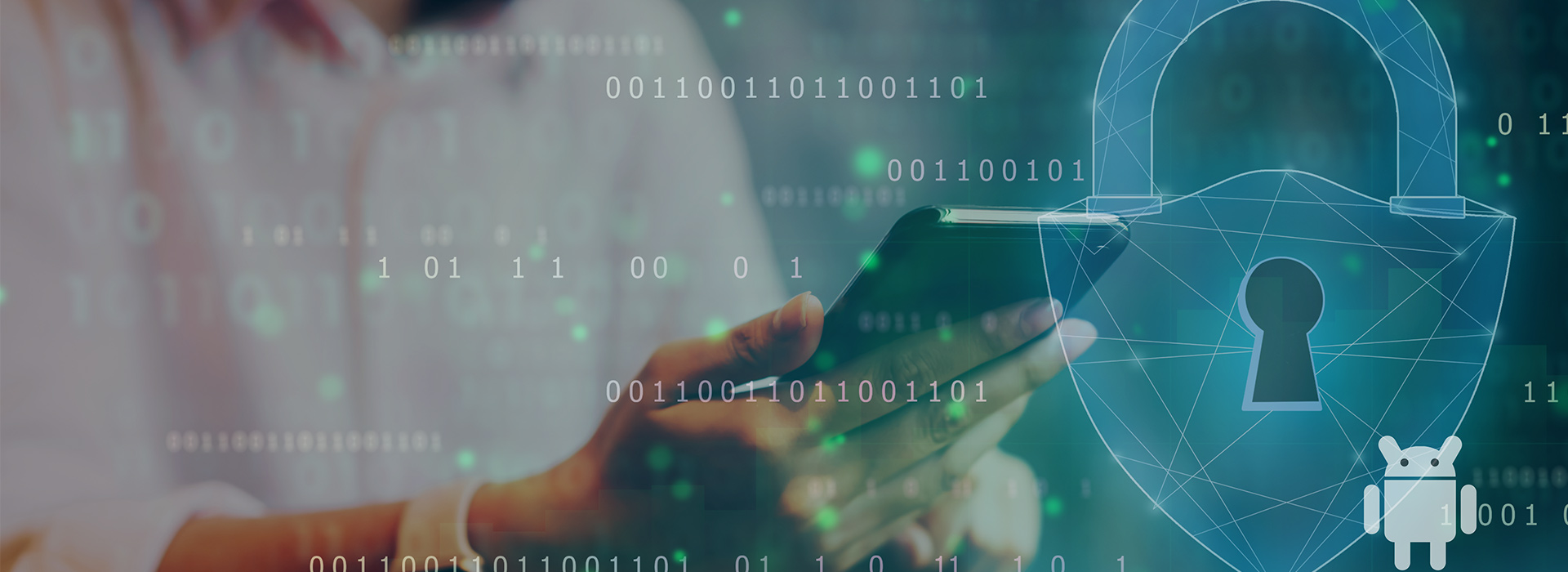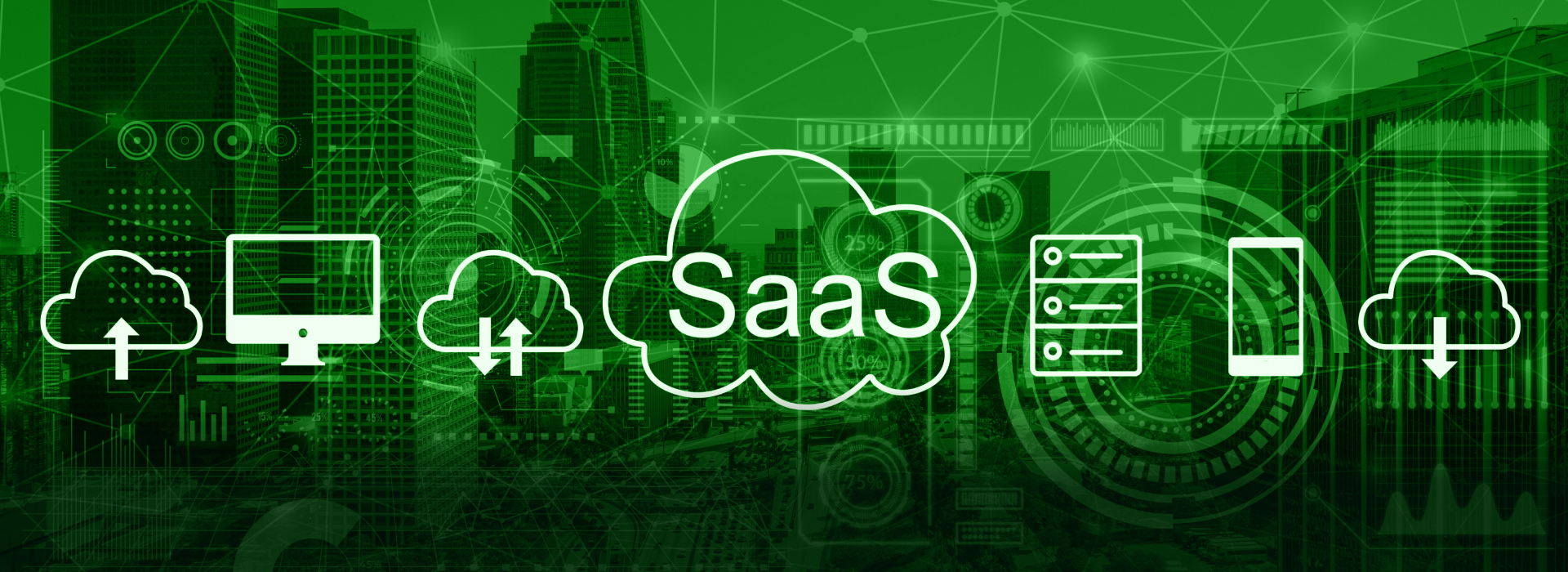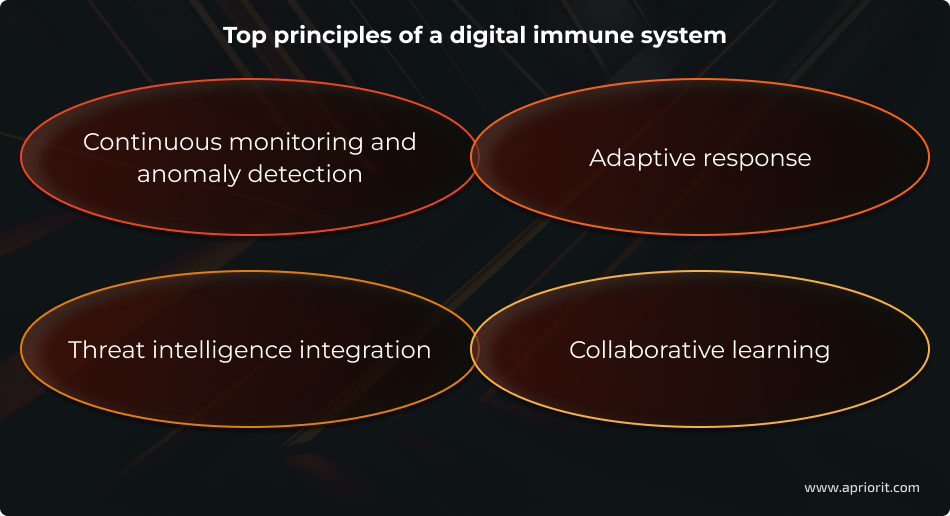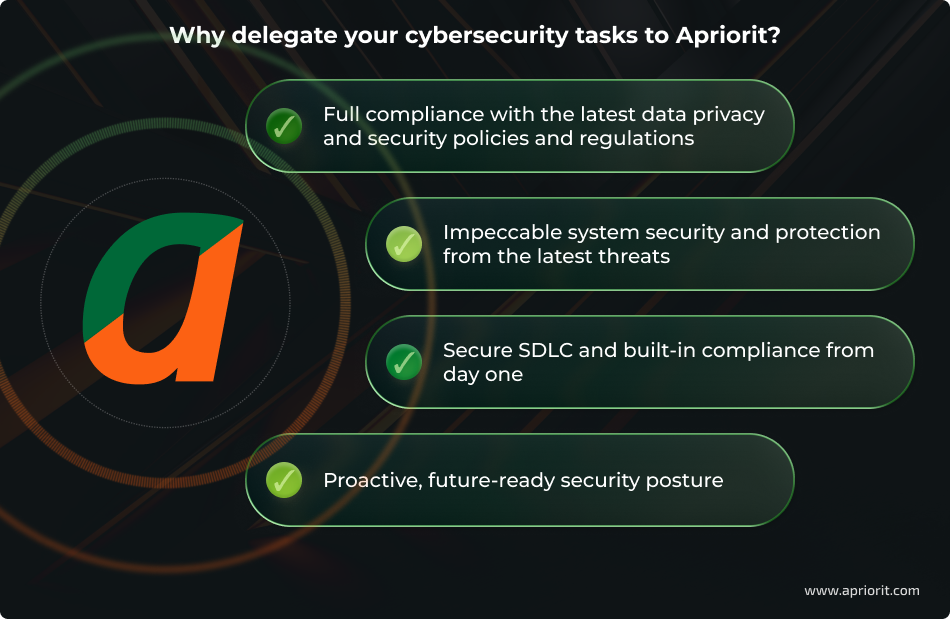Key takeaways:
- Cybersecurity in 2026 is shifting from reactive defense to proactive and preventive models driven by AI, automation, and continuous validation.
- Modern security strategies must address growing complexity coming from shadow AI and sophisticated social engineering.
- Zero trust architecture, identity-first security, and in-use data protection are becoming foundational features for cybersecurity products.
- Organizations building or modernizing their software products need deep cybersecurity expertise to combine resilient architecture, regional compliance, and autonomous threat prevention.
Cybercriminals constantly find new ways to steal personal and financial data, disrupt business operations, destroy reputations, and commit fraud. To protect your business from threats powered by new technologies, you’ll need to adjust your approach to building software and adopt new technologies and methods in your software development process.
In 2026, this shift will become even more critical. Rapid AI adoption by both hackers and cybersecurity specialists is the arms race that’s shaping how we’ll think of security in 2026. Add to this the growing complexity in cloud, IoT, and hybrid infrastructures, and you’ll see how much you need to consider when building your cybersecurity strategy.
New research by IBM shows that 1 in 6 breaches in 2025 involved AI-driven attacks, and 72% of data breaches involved data stored in the cloud. Cloud data breaches also had the highest average cost at $5.05 million each. These are just a few examples of the threats that are waiting around the corner in 2026.
In this article, we explore the top cybersecurity trends of 2026 and technologies that will help you protect your digital products this year and beyond.
If you’re a technical or business leader responsible for building, scaling, or protecting digital products, this article is for you.
So, what are the top cybersecurity trends for 2026? Let’s find out.
Contents:
- Trend #1. Growing adoption of AI for threat management
- Trend #2. Post-quantum cryptography as a near-term priority
- Trend #3. AI agents as authenticated identities
- Trend #4. Zero trust architecture as a necessity
- Trend #5. Focus on resilience and digital immune system adoption
- Trend #6. Rust programming language for secure development
- Trend #7. Confidential computing
- Trend #8. Preemptive cybersecurity
- Trend #9. Geopatriation
- How Apriorit can help you safeguard your product in 2026
- Conclusion
Trend #1. AI in cybersecurity: both threat and defense
In 2026, AI is expected to change the security landscape even more than in recent years. While AI enables organizations to build more robust defenses and automate threat detection, cybercriminals use it to launch fast and large-scale attacks. Let’s see how AI can be your biggest threat — and a solution.
Cybercriminals use AI for:
- Social engineering. Apart from well-known phishing attacks, in 2026, threat actors will start deploying AI-driven vishing (voice phishing) attacks, creating hyperrealistic voice clones to impersonate executives or IT staff. These manipulative interactions bypass traditional security training and make identity verification nearly impossible without advanced controls.
- Scalable phishing and malware generation. GenAI automates the creation of convincing phishing campaigns and produces endless variations of malicious code that can evade signature-based detection.
- Using shadow AI and shadow agents. Rapid adoption of autonomous AI tools inside companies creates invisible, uncontrolled data pipelines. In 2024, 48% of employees surveyed across 47 countries admitted uploading company data to public AI tools, exposing organizations to data leaks, compliance violations, and IP theft. By 2026, “shadow agents” (autonomous micro-AIs performing tasks independently) will likely become one of the most disruptive internal risks for organizations.
- Bypassing multi-factor authentication (MFA) and exploiting identity systems. Attackers increasingly use AI to mimic user behavior patterns, craft targeted MFA-bypass attempts, and generate convincing access requests.
On the defense side, AI is rapidly becoming the backbone of next-generation security operations. Instead of using separate AI tools for detecting threats, cybersecurity teams are now fully integrating their activities with AI by using:
- Agentic SOC. In 2026, security teams will no longer sift through endless alerts. Instead, they’ll direct AI agents that will autonomously detect threats and perform behavioral analysis, log correlation, incident triage, and more. This will allow analysts to focus on strategy and high-level analysis instead of frequent alerts.
- Security platforms. Instead of having a suite of third-party and in-house AI apps for different security purposes, companies will shift to using unified AI security platforms that keep their AI usage centralized and visible. This will help organizations to enforce AI access and usage policies, protect data flowing between models, and detect anomalies in one place. According to Gartner, over 50% of enterprises will use AI security platforms by 2028.
- Preventive AI models instead of legacy SIEM systems. Costly SIEM systems will take the backseat in 2026, giving space to prevention-first, AI-driven platforms. They’ll not only automatically detect attacks; they’ll also stop them in real time. Or, they’ll mitigate threats before they even occur using technologies like anti-data exfiltration AI.
Apriorit’s tip: If you’d like to integrate autonomous AI tools into your cybersecurity platforms, we recommend that you also:
- Deploy robust AI governance frameworks to manage your GenAI tools, mitigate shadow AI, and enforce access controls
- Integrate AI safety tools early in the development lifecycle
- Monitor the AI agents that your cybersecurity platforms use to prevent unauthorized data exfiltration
Need to prepare your product for the future?
Apriorit’s team of cybersecurity experts will help you update your product with the latest technologies to protect it against current and future threats!
Trend #2. Post-quantum cryptography as a near-term priority
At Apriorit, we have been talking about post-quantum cryptography for quite some time, warning our readers that sooner or later they’ll have to implement it to keep their software secure. In 2026, PQC will move from long-term planning to active implementation.
As harvest-now, decrypt-later threats are intensifying, in 2026, the timeline for implementing PQC will shrink dramatically. Even though quantum computers aren’t fully realized yet, when that day comes, it will be too late to implement cryptography that can protect against them. That’s why you need to focus on post-quantum cryptography now.
In 2024, NIST approved multiple PQC algorithms that are ready for implementation, clearing the path for enterprise adoption. As a result, 2026 will be the year many organizations begin the difficult process of inventorying cryptographic assets, identifying quantum-vulnerable components, and planning staged migrations to PQC-safe alternatives.
Governments are already setting concrete timelines. For example, U.S. federal agencies face mandates to inventory and replace vulnerable encryption within the decade. If you do business in a highly regulated industry like healthcare, finance, telecom, or critical infrastructure, then you’ll be among the first to face compliance pressure.
Apriorit’s tip: To start the transition, you can take these actionable steps right now:
- Form a team that includes stakeholders from security, compliance, IT, and business teams so they can coordinate all PQC-related activities, track regulatory changes, and build a transition strategy.
- Conduct a cryptographic inventory to see how your systems, apps, and third-party tools are encrypted right now. Map mechanisms that will be vulnerable to quantum attacks.
- Check if your vendors (cloud providers, payment processors, etc.) are on the path to PQC compliance, and only integrate products from companies that are to prevent further technical debt.
- Encrypt your long-term sensitive data with quantum-safe or hybrid cryptography to prevent harvest-now, decrypt-later attacks.
- Prepare your software for the PQC transition by refactoring or replacing hardcoded or rigid parts of your systems.
Apriorit experts have already gained experience implementing PQC algorithms into software products, so if you need help with transitioning your system to PQC, we’re ready.
Read also
How to Build & Implement an Encryption Framework for an Android App
Learn how to develop a framework to implement transparent encryption that secures data even if the device is rooted.

Trend #3. AI agents as authenticated identities
As organizations use AI agents to automate tasks, access systems, and make operational decisions, traditional identity and access management (IAM) is no longer enough. These agents don’t just assist users — they act on their own, move across systems, and often run without constant human supervision.
Because of this, organizations must treat AI agents as separate digital identities with clearly defined permissions and controls. This requires:
- assigning unique identities to AI agents
- defining strict privilege boundaries and least-privilege access
- mapping relationships among humans, services, and autonomous agents
- monitoring agent behavior for anomalies or manipulation
This expansion fundamentally reshapes identity and access management. IAM in 2026 must secure humans, devices, services, and autonomous decision-making systems within a single framework.
Organizations that fail to evolve their identity strategy risk losing visibility and control over one of the fastest-growing and least-governed parts of their infrastructure.
In short, you’ll have to rethink the way you approach authentication right now if you’re using or dealing with AI agents. This means that your IAM system needs to secure not only humans and devices but also autonomous decision-making entities.
Trend #4. Zero trust architecture as a necessity
Insider attacks consistently result in the highest average breach costs among initial threat vectors ($4.92 million per breach in 2025 according to IBM). Some insider attacks are malicious, some are accidental, but all must be protected against.
In recent years, we’ve seen more businesses implement zero trust principles that involve constant monitoring, network segmentation, and least privilege.
By 2026, we expect to take it one level further with zero trust architecture (ZTA) — the default way modern systems will be designed, deployed, and operated.
Unlike traditional perimeter-based security, zero trust architecture embeds verification, segmentation, and monitoring directly into system architecture. Access decisions are continuously evaluated based on identity, behavior, context, and risk — across users, devices, workloads, APIs, and (as we mentioned earlier) AI agents.
At the architectural level, zero trust means that:
- Continuous verification is built into the design. Authentication and authorization happen at every interaction, not just at login, and are repeated as conditions change.
- Identity is a security perimeter. Users, services, workloads, and non-human actors are treated as first-class identities, each with explicitly defined trust boundaries.
- Micro-segmentation is applied across applications and infrastructure. This limits lateral movement and contains breaches at the smallest possible blast radius.
- Least-privilege access is enforced programmatically. This allows the system to reduce over-permissioning and prevent privilege creep as systems scale.
- Real-time telemetry and behavioral analytics are integrated into access decisions. Thanks to this, your security team can rapidly detect anomalies, misuse, or compromised identities.
For organizations operating in cloud-native, hybrid, and highly distributed environments, ZTA can significantly reduce the risk of insider threats and hacking by constantly verifying users and providing them with fine-grained access to sensitive data.
Related project
Improving a SaaS Cybersecurity Platform with Competitive Features and Quality Maintenance
Learn how we implemented new features in a low-level vulnerability detection engine and improved the platform’s stability and user experience.

Trend #5. Focus on resilience and digital immune system adoption
Security incidents can not only cause data breaches but also disrupt day-to-day operations, resulting in further reputational and monetary losses. That’s why in 2026, businesses will focus on resilience in their software development and adopt the concept of a digital immune system, as coined by Gartner.
Drawing inspiration from the adaptive nature of biological immune systems, a digital immune system aims to be a dynamic, self-learning defense mechanism that can identify threats and withstand disruptions to support continuous and uninterrupted work.
The principles of a digital immune system include:

- Continuous monitoring and anomaly detection. Anomaly detection mechanisms use baselines of normal behavior and alert all systems to all potential threats.
- Adaptive response. The system automatically responds to threats depending on their type and severity.
- Threat intelligence integration. Digital immune systems integrate threat intelligence feeds and use real-time data on emerging threats to enhance their detection and response capabilities.
- Collaborative learning. Insights from one part of the system contribute to the overall defense posture, creating an interconnected security infrastructure.
To further fortify their security and create fault-tolerant infrastructure, in 2026, organizations will use DevSecOps and CloudOps in combination with digital immune systems.
DevSecOps (development, security, and operations) offers a modern approach to software infrastructure development that integrates security at each stage of the software development lifecycle. This allows organizations to create inherently protected products and build automated security pipelines from the very start of their development projects.
CloudOps (cloud operations) complements this security-first strategy by centralizing security management and allowing for efficient coordination and response across the entire cloud environment.
You can combine a digital immune system, CloudOps, and DevSecOps to create a comprehensive protection system. Based on continuous monitoring, such a system can quickly respond to cybersecurity incidents and automatically adapt to future threats.
Trend #6. Rust programming language for secure development
Using Rust is one of the top cybersecurity trends in 2026. In 2023, NIST included Rust in a list of safer languages, and in 2026, we expect more organizations to use it for building inherently secure products.
Rust offers unique features that address many common vulnerabilities associated with traditional languages such as C and C++. Features that make Rust a good option for cybersecurity are:
- Memory safety. Rust enforces strict memory management rules through its ownership model and other features, helping developers manage memory-related processes and avoid errors, crashes, and security issues.
- Concurrency safety. Rust’s design ensures that different parts of the program don’t change the same data at the same time, making it safer and more reliable for complex, multitasking systems.
- Error handling. With its robust type system, Rust forces developers to handle potential errors explicitly, reducing the likelihood of unexpected runtime failures.
- High performance. Rust offers zero-cost abstractions, making it as efficient as low-level languages like C while maintaining higher security standards.
What solutions can you use Rust for?
Rust excels at low-level system programming, especially for developing operating systems, drivers, and embedded systems. Its support for asynchronous programming also makes it great for building high-performance network systems and tools. Rust is becoming a popular choice for building cybersecurity products like encryption systems and intrusion detection tools. At Apriorit, we also use Rust for cybersecurity tasks, such as performing penetration testing and building cryptographic applications.
Read also
Secure Development with Rust: Benefits, Features, and Use Cases
Explore how Rust can enhance security, boost performance, and simplify development for your project. Read our in-depth article on Rust’s potential for cybersecurity solutions.

Trend #7. Confidential computing
Protecting data in transit and at rest has been a basic principle of cybersecurity for a long time. But what about data that’s processed in memory? As organizations move sensitive data to shared, cloud-based, and distributed environments, this data risks being exposed during processing.
Confidential computing addresses this challenge by isolating workloads inside hardware-based trusted execution environments (TEEs). TEEs ensure that data remains protected even during processing and stays inaccessible to infrastructure owners, cloud providers, and anyone with physical access to the hardware.
Confidential computing is especially valuable for regulated industries and global organizations facing strict compliance requirements, geopolitical risks, and the need for secure cross-organization or cross-competitor collaboration.
Gartner predicts that confidential computing will protect more than 75% of operations processed in untrusted infrastructure by 2029.
Trend #8. Preemptive cybersecurity
Because of GenAI, merely detecting and responding to incidents is no longer enough. In 2026, organizations will try to prevent cybersecurity incidents instead of reacting to them post-factum, and this will be achieved through preemptive cybersecurity.
Preemptive cybersecurity uses AI and machine learning to anticipate and neutralize threats before they occur. It achieves this through using predictive threat intelligence, deception technologies, automated moving target defense, and agentic AI systems that make decisions autonomously without human intervention.
Gartner predicts that by 2030, preemptive cybersecurity technologies will account for over 50% of all IT security spending — a steep rise from less than 5% in 2024.
This trend signals a move toward specialized, AI-driven solutions designed for specific industries, environments, and threat models, as well as deeper integration across the security ecosystem to collectively address complex and fast-evolving risks.
Gartner warns that cybersecurity companies who keep relying only on reactive security strategies will put their services, companies, and clients in increasing danger.
Trend #9. Geopatriation
As global tensions rise and data regulations tighten, many organizations are rethinking how and where they store their data. Relying on large global cloud providers can create risks when data is stored across borders or governed by foreign laws, especially for sensitive or regulated workloads.
For these reasons, in 2026, many companies will move their company data and applications out of global public clouds and opt for local options instead. Using sovereign clouds, regional cloud providers, or even private data centers will help companies gain more control over their data, as well as its compliance and location. This will be especially important for businesses that operate in highly regulated industries and deal with sensitive data.
Gartner predicts that by 2030, over 75% of companies in Europe and the Middle East will move their virtual workloads to local clouds to reduce geopolitical risk, up from less than 5% in 2025.
How Apriorit can help you safeguard your product in 2026
Cybersecurity is the foundation of our work, and we have built a strong base of cybersecurity expertise and extensive engineering resources over the years. You can rely on our top cybersecurity talent at any stage of your development project, from planning to maintenance and support.

Let’s take a look at just a few examples of how we help our clients build secure, future-ready systems.
Case 1. Auditing the security of a connected vehicle communication system
A global provider of automotive software solutions needed to ensure the security of their system for advanced vehicle communication.
To achieve resilience against potential cyber threats, the Apriorit team:
- Provided a clear picture of the system by analyzing software components and creating an SBOM
- Uncovered potential security flaws through reverse engineering
- Evaluated system resilience through penetration and stress testing
- Provided a detailed and prioritized list of current system vulnerabilities after a code review and compliance check
Case 2. Improving a SaaS cybersecurity platform with new features
A worldwide provider of a SaaS-based cybersecurity platform asked us to implement new features in a low-level vulnerability detection engine.
Such functionality was crucial to help them satisfy customer needs, comply with numerous laws and regulations, and ensure product growth.
So far, we have:
- Improved their competitiveness by adding new features and support for more platforms
- Helped retain existing users by providing timely and efficient support
- Improved the efficiency of our client’s in-house team by automating internal processes
- Opened new opportunities for working with high-profile clients from highly regulated industries by ensuring the platform’s compliance with strict regulatory requirements.
Case 3. Building a custom secrets management application for a cybersecurity company
A US-based company that delivers high-end cybersecurity products and services to customers worldwide needed secrets management software for internal use.
The Apriorit team:
- Built an MVP and then polished the solution with additional security features
- Created a custom secrets encryption algorithm for extra security
- Improved our client’s overall security score by building a custom secrets vault
Conclusion
In 2026, cybersecurity is no longer about reacting but about resilience and prevention. The continued growth of cybercrime, the evolution of ransomware, and the rising impact of insider threats show that attacks are becoming more targeted, organized, and disruptive.
At the same time, attack surfaces keep growing, expanding into cloud, shadow AI, virtualization, and interconnected enterprise environments. Threat actors are shifting their focus to foundational layers such as identities, hypervisors, third-party services, and core enterprise systems, where a single breach can cripple entire operations.
To stay resilient, organizations must move beyond traditional detection-only models and embed security into product development from the start. Prevention-first strategies, strong governance, and continuous monitoring across modern infrastructures are essential to protecting software in the long term.
At Apriorit, we help you turn cybersecurity trends into practical security products and solutions that protect your business today and prepare you for tomorrow’s threats.
No matter what challenges 2026 puts before us, let’s work together to provide an incident-free future for your product and keep it secure and reliable for both you and your customers!
Need a reliable team of cybersecurity experts?
Apriorit can provide you with top software engineering and quality assurance talents to tackle any cybersecurity task and safeguard your product!
FAQ
How can businesses prioritize which of the top trends in cybersecurity in 2026 to implement first?
<p>Before you apply any of the technologies or approaches we’ve mentioned, it’s important to understand the current state of your system.</p>
<p>For this, we recommend conducting a security assessment that will give you a clear picture of your current data sensitivity, exposure, and potential weaknesses that need to be dealt with first. This will help you build a strategy and avoid fragmented, tool-heavy security stacks.</p>
Why are traditional detection-and-response security models no longer sufficient?
<p>Detection-and-response assumes attackers can be identified and stopped after they enter the system. In 2026, AI-driven attacks move too fast and often blend into legitimate activity, leaving little time to react.</p>
<p>Alert fatigue, staffing shortages, and delayed response windows further reduce effectiveness. As a result, you risk suffering damage before alerts are even reviewed. That’s why, in 2026, we recommend focusing on prevention and automated risk reduction.</p>
What is preemptive cybersecurity, and how does it prevent attacks before they happen?
<p>Preemptive cybersecurity focuses on eliminating attack paths before exploitation occurs. It uses AI and automation to predict attacker behavior, harden exposed assets, isolate vulnerable components, and dynamically change attack surfaces. Instead of waiting for indicators of compromise, preemptive controls block malicious actions in real time.</p>
<p>This approach allows you to reduce reliance on human intervention and limits damage from zero-day exploits, credential abuse, and AI-powered attack automation.</p>
What security risks do AI agents introduce, and how can organizations manage those risks?
<p>AI agents introduce risks related to autonomy, access scope, and data exposure. Poorly governed agents can access sensitive systems, leak data, or be manipulated through prompt injection or data poisoning.</p>
<p>If you use AI agents in your organization, you need to treat them as non-human identities with strict access boundaries, continuous monitoring, and auditability. Applying least privilege, identity governance, and behavioral anomaly detection is essential to prevent misuse or silent escalation.</p>
What steps should CTOs take to prepare their teams for AI-driven security challenges?
<p>CTOs should start by inventorying where AI is already used across products, internal tools, and third-party services, including unsanctioned shadow AI.</p>
<p>Next, they should extend identity and access management to cover AI systems and agents, enforce least-privilege access, and define clear ownership for AI security decisions. Because AI threats develop rapidly, we recommend investing in real-time threat prevention and anomaly detection systems that will help you catch threats before they deal significant damage.</p>
How can organizations balance innovation with security when integrating AI agents?
<p>Organizations should define strict operational boundaries for AI agents from day one. This means limiting which systems agents can access, what data they can read or modify, and which actions they can initiate autonomously.</p>
<p>Sandboxing and confidential computing allow teams to test agents on real workloads without exposing sensitive data. Additionally, it’s important to implement tools and processes that allow you to continuously validate AI agent behavior so you can fix and fine-tune agents before they expose sensitive data or provide inaccurate results.</p>


